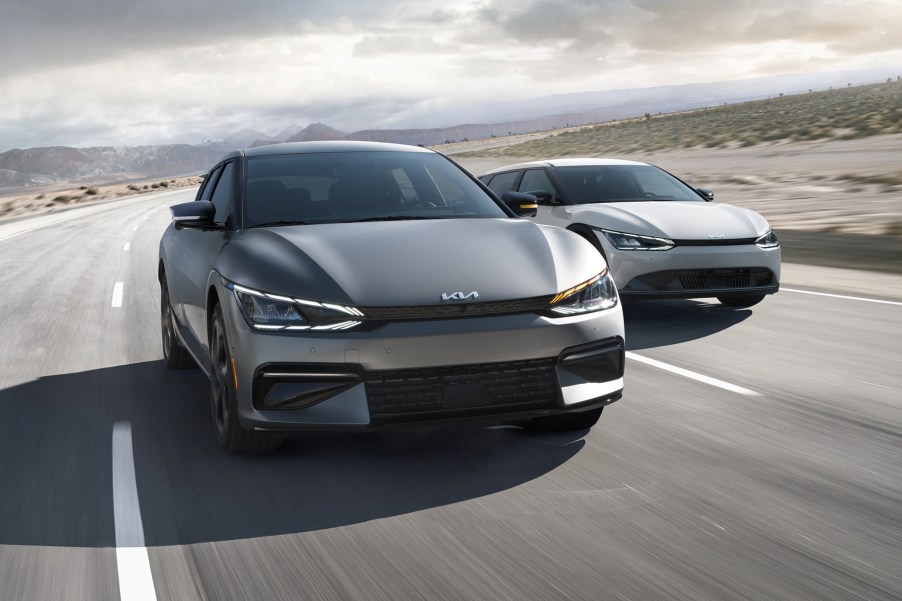
What Does EV6 Stand for in the Kia EV6?
While the Kia Niro EV came first, it was available as a hybrid and had the underpinnings of an internal combustion engine. As such, the Kia EV6 is the brand’s first dedicated EV. But what do the letters and numbers in the name stand for or mean?
Kia EV6 history

The Kia EV6 was first revealed in March 2021 based on Hyundai Motor Group’s Electric-Global Modular Platform (E-GMP) unveiled a year prior. For context, other EVs based on the E-GMP platform include the Hyundai Ioniq 5, Genesis GV60, and even the Hyundai Ioniq 6, set to hit the market in early 2023.
Among the perks of the platform are the ultra-high-strength steel frame and eight-point battery mount that help prevent cabin deformation in case of an accident. There’s also the 800V charging capabilities that can add enough range to finish a road trip in as little as five minutes.
The EV6 was designed by Karim Habib, who’d been a designer for BMW, Mercedes-Benz, and Infiniti before ending up at the Hyundai Motor Group. With that, the company abandoned the “tiger nose” concept, which had defined its line-up since 2007, in favor of something that would define the brand’s future.
According to AutoEvolution, the design is highlighted by a narrow opening between the vehicle’s headlights, with the grille placed much lower to cool the electric powertrain. Karim, in a presentation, also mentioned the EV6 was meant to combine contrasting elements like the compact car stance of a hatchback, the sportiness of a fastback, and maybe the strength of a rally vehicle.
What the EV6 stands for
While many automakers complicate their naming systems, Kia’s is quite simple, with the EV standing for “electric vehicle.” As for the number, it’s just a marker indicating the car’s position in the line-up according to MotorAuthority.
With that, it’s safe to assume other similar names will come in the future. You can probably expect a Kia EV7, EV8, and so son.
The current state of the Kia EV6
According to Kia, the 2023 EV6 is available starting at $48,700. There are five trims to pick from: the Wind RWD, Wind e-AWD, GT-Line RWD, GT-Line e-AWD, and GT e-AWD.
All models have a 77.4 kWh battery, although the horsepower and torque output figures differ. This also means the range offered is different. The two RWD models provide 225 hp and 258 lb-ft of torque with an EPA-estimated 310 miles of range.
As for the two corresponding all-wheel drive models, i.e., the Wind e-AWD and GT-Line e-AWD, they’re rated at 320 hp with 446 lb-ft of torque. This brings the range down to an EPA-estimated 282 miles though you will get faster acceleration.
At the top of the line-up is the GT trim with a 576 hp dual motor system. It’s also rated at 545 lb-ft of torque, allowing the electric SUV a 3.5-second 0-60 mph acceleration time. Naturally, this comes at the cost of range, with the setup capable of going only up to 206 miles.
The 2022 variant was named the European car of the year ahead of 59 other vehicles like the Audi R8, Hyundai Ioniq 5, Jaguar J-Pace, Maserati Grecale, etc. Also, while it didn’t clinch the top spot, it was among the finalists for the North American utility vehicle of the year award.
As for the other Kia EVs, there will be 14 in total by 2027, with some of the inclusions being the EV1 to EV9. The Kia EV9 concept is already out, although the production model will likely be different.


